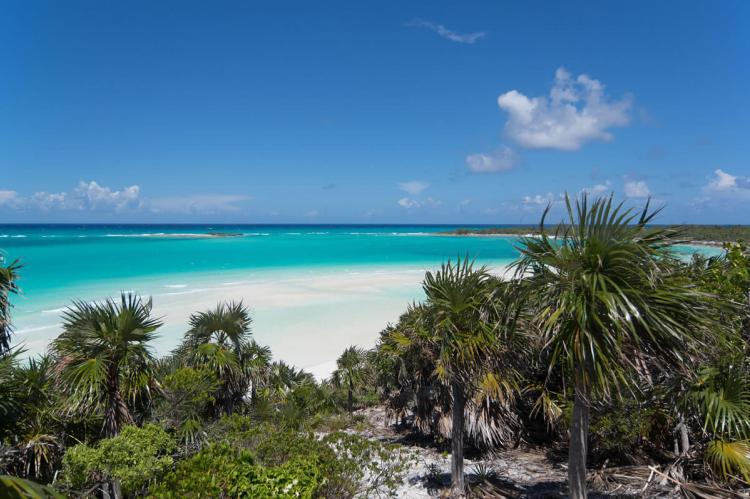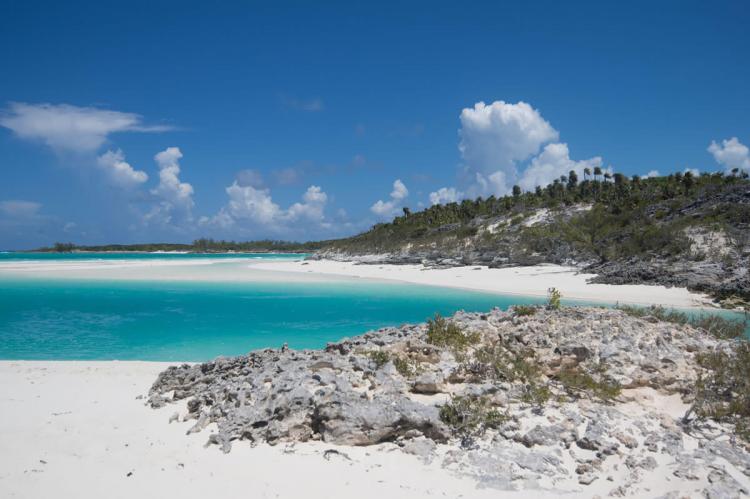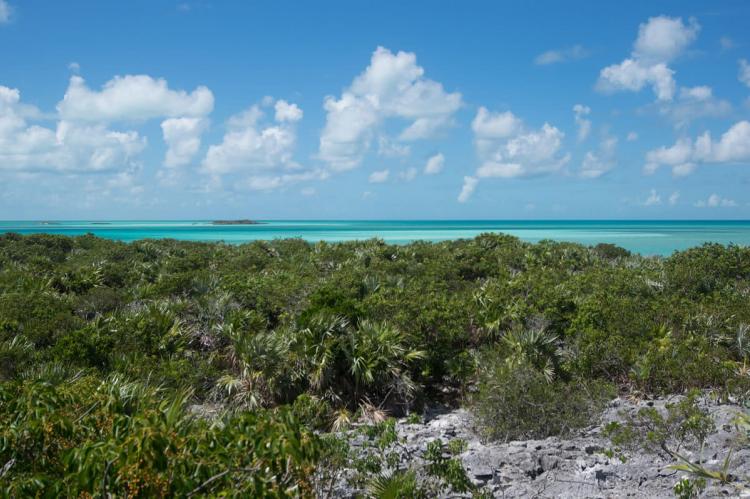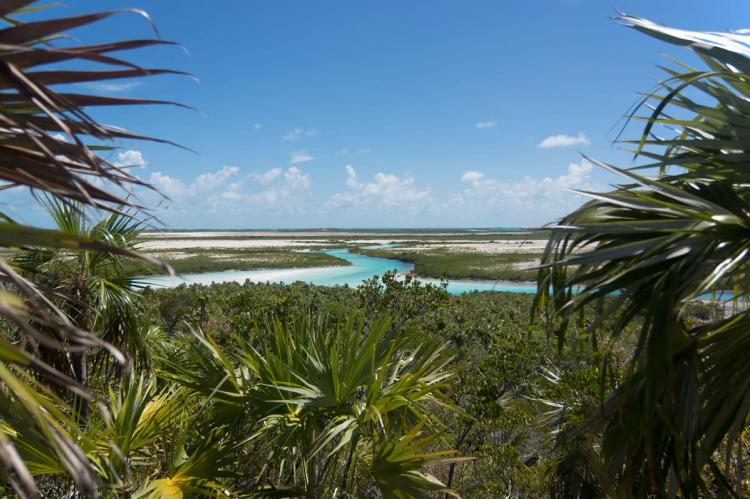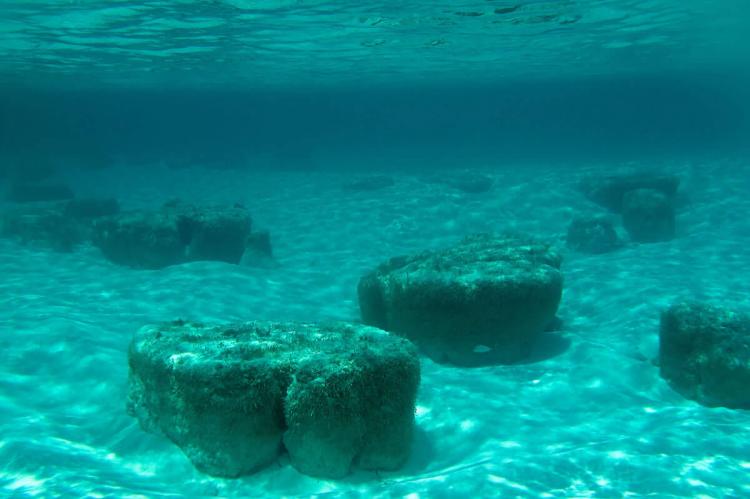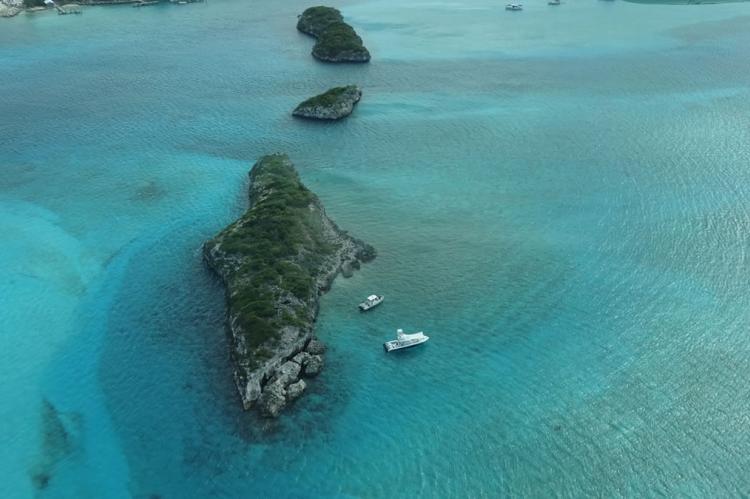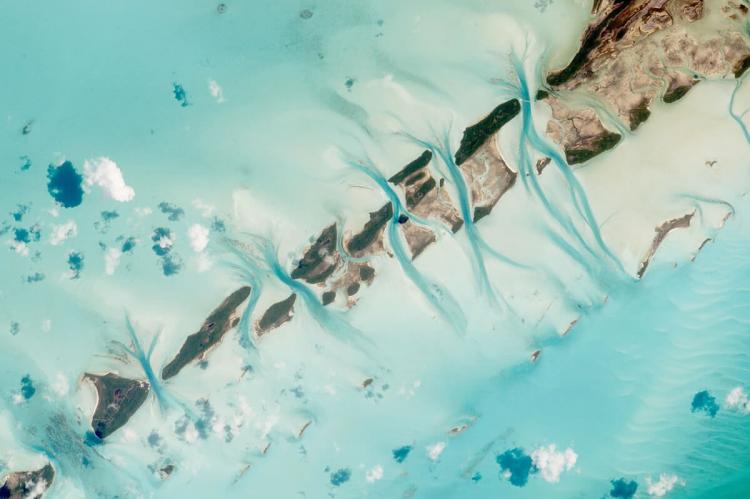The Exuma Cays: A Pristine Archipelago in The Bahamas
The Exuma Cays are an archipelago of over 365 islands and cays in the Bahamas known for their white-sand beaches, turquoise waters, and crystal-clear waters. The Exuma Cays Land and Sea Park protects various habitats and is one of the most significant conservation areas in the Caribbean.
The Exuma Cays and Exuma Cays Land and Sea Park: A Caribbean Gem of Natural Wonder and Conservation
The Exuma Cays, a stunning chain of over 365 islands and cays, form a unique and picturesque part of The Bahamas, a nation of islands scattered across the Atlantic Ocean. Located about 80 kilometers (50 miles) southeast of Nassau, the Bahamian capital, the Exuma Cays are famed for their pristine white-sand beaches, strikingly turquoise waters, and an array of marine life that thrives in their crystal-clear surroundings.
A component of the Lucayan Archipelago, which also includes the Turks and Caicos Islands, the Exuma Cays, often referred to as the Exumas, is not just a destination for leisure and exploration but also a significant example of conservation efforts within the Caribbean region. The Exuma Cays Land and Sea Park is central to these efforts, a protected area globally recognized for its ecological importance and innovative conservation measures.
The Exuma Cays: A Diverse Archipelago of Natural Beauty
The Exuma Cays are a varied and enchanting archipelago. Each cay offers something unique—from bustling hubs of activity to serene, untouched natural environments. The islands vary in size, landscape, and level of development, but they all share the common feature of extraordinary natural beauty.
- Great Exuma: The largest and most populated island in the Exuma chain, Great Exuma is home to George Town, the capital of the Exumas. George Town is a small, charming town with a picturesque main street lined with shops, restaurants, and local businesses. It serves as the administrative and cultural heart of the Exumas, offering visitors a glimpse into Bahamian life. Great Exuma is also the starting point for exploring the surrounding cays, each offering its own attractions and experiences.
- Staniel Cay: One of the most popular destinations in the Exumas, Staniel Cay is known for its proximity to several famous natural attractions. Among these are Thunderball Grotto, an underwater cave system made famous by the James Bond film Thunderball, and Big Major Cay, home to the world-famous swimming pigs. Staniel Cay has a marina and accommodations and is a popular base for exploring the nearby cays and attractions.
- Big Major Cay: Often referred to as Pig Beach, Big Major Cay is perhaps the most iconic destination in the Exumas. The island is uninhabited by humans but is famously home to a population of friendly swimming pigs that have become an international sensation. Visitors to Big Major Cay can swim and interact with these pigs in the warm, shallow waters—a truly unique experience that draws tourists from around the globe.
- Compass Cay: Compass Cay is renowned for its marina and the opportunity to swim with nurse sharks. These gentle creatures gather in the shallow waters around the island, where visitors can interact with them in a safe and controlled environment. Compass Cay is also known for its stunning natural scenery and clear waters, making it a popular stop for yachts and boats cruising through the Exumas.
- Warderick Wells Cay: As the headquarters of the Exuma Cays Land and Sea Park, Warderick Wells Cay plays a central role in the archipelago's conservation efforts. The island is home to the park's visitor center, where visitors can learn about the park's history, its ecosystems, and ongoing conservation projects. The island itself is a haven for wildlife, with several nature trails leading to scenic viewpoints and pristine beaches.
- Norman's Cay: With a fascinating and somewhat notorious history, Norman's Cay was once a key location in the drug trafficking operations of the 1980s. Today, the island is a popular destination for divers who come to explore the sunken remains of a drug-smuggling plane. Norman's Cay offers a mix of historical intrigue and natural beauty, making it a compelling destination within the Exumas.
- Highbourne Cay: Highbourne Cay is known for its luxury marina and high-end services, catering primarily to the yachting community. The island offers stunning beaches, clear waters for snorkeling, and a relaxed atmosphere that appeals to those seeking a luxurious escape in the Exumas.
- Little Exuma: Connected to Great Exuma by a small bridge, Little Exuma offers a quieter, more secluded experience. The island is less developed than Great Exuma, providing a peaceful retreat with beautiful beaches and a slower pace of life.
- Fowl Cay: Fowl Cay is a private island offering luxury villas for rent, providing visitors with an exclusive and secluded experience for visitors. The island is renowned for its stunning scenery, privacy, and the opportunity to explore the surrounding waters and reefs in complete tranquility.
- Great Guana Cay: Known for its vibrant local culture and scenic landscapes, Great Guana Cay is home to the popular "Nippers Beach Bar & Grill," a lively spot that attracts both locals and tourists. The island's beautiful beaches and relaxed atmosphere make it a favorite destination for those looking to experience the laid-back lifestyle of the Exumas.
- Little Farmers Cay: This small island is known for its annual Farmers Cay Regatta, a local sailing event that draws visitors from around the region. Little Farmers Cay offers a more intimate experience of Bahamian culture, with opportunities to engage with the local community and enjoy the island's natural beauty.
Each island contributes to the Exuma Cays' overall charm and diversity, making the archipelago a genuinely remarkable destination within The Bahamas.
Exuma Cays Land and Sea Park: A Pioneer in Marine Conservation
The Exuma Cays Land and Sea Park is one of the most significant conservation areas in the Caribbean. Established in 1958, it was the world's first land and sea park, covering an area of 455 square kilometers (176 square miles) and extending from Shroud Cay in the north to Bell Cay in the south. The park includes a variety of habitats, from vibrant coral reefs and mangrove communities to the scrublands and beaches of the cays themselves.
Geography and Ecology
The park's landscape is characterized by a diverse array of ecosystems, each playing a vital role in supporting the region's rich biodiversity. The mangrove communities, found primarily on the eastern sides of the cays, serve as nurseries for many marine species, providing shelter and food for young fish, crustaceans, and other aquatic life. The taller scrub vegetation on the western sides of the cays is home to numerous plant species, including epiphytic orchids and bromeliads, which thrive in humid, tropical environments.
The park's environment is equally diverse and includes extensive coral reef systems, seagrass beds, and deep oceanic waters. These habitats support a wide range of marine life, including various fish species, invertebrates, and marine mammals. The coral reefs within the park are particularly noteworthy for their health and diversity despite the challenges posed by climate change and other environmental pressures.
Flora and Fauna
The Exuma Cays Land and Sea Park is home to a remarkable array of terrestrial and marine wildlife. One of the most significant species in the park is the Bahamian hutia, a rare and endangered rodent that is the only terrestrial mammal native to The Bahamas. The hutia was introduced to the park in 1973, where it has since thrived, thanks in part to the park's protected status.
The park is also an important breeding ground for several species of seabirds, including Audubon's shearwater, white-tailed tropicbird, brown noddy, and six species of terns: bridled, least, roseate, royal, sandwich, and sooty. These birds rely on the isolated, uninhabited cays within the park for nesting, free from the disturbances and threats that often accompany human development.
Marine life in the park is equally impressive. The coral reefs are home to a diverse array of fish, invertebrates, and other aquatic species. Despite the broader decline in commercial fish species due to overfishing in the region, the Exuma Cays Land and Sea Park remains a critical refuge for conch, grouper, and lobster species. These species thrive within the park's boundaries, where they are protected from fishing and other extractive activities.
One of the most notable conservation measures within the park is its designation as a "no-take reserve." In 1985, The Bahamas National Trust, the organization responsible for managing the park, banned all forms of fishing within the park's boundaries. This initiative has profoundly impacted the park's ecosystems, allowing marine species to reach maturity and reproduce in a protected environment. The benefits of this policy extend beyond the park itself, as the increased populations of fish and other marine species within the park help to replenish areas outside its boundaries.
The endangered Allen Cays rock iguana (Cyclura cychlura inornata) is another key species found within the Exuma Cays Land and Sea Park. These iguanas, endemic to The Bahamas, inhabit several islands within the park. Conservation efforts have been instrumental in protecting these iguanas, which face threats from habitat loss, predation by invasive species, and human activity.
Visitor Experience
The Exuma Cays Land and Sea Park is a haven for wildlife and a popular destination for eco-tourism and adventure. The park's headquarters on Warderick Wells Cay is a focal point for visitors, offering information about the park's ecosystems, history, and conservation efforts. The island is a beautiful example of the natural landscapes that define the Exumas, with several nature trails leading to scenic viewpoints, secluded beaches, and other points of interest.
One of the most popular trails on Warderick Wells Cay leads to Boo Boo Hill, a vantage point that offers breathtaking views of the surrounding cays, the anchorage below, and the expansive Exuma Sound. The hill is also a site of local legend, where visitors leave driftwood signs with their names as a memento of their visit—a tradition that has become a unique feature of the park.
The waters surrounding Warderick Wells Cay and the rest of the park offer some of the best snorkeling and diving opportunities in The Bahamas. The coral reefs are home to diverse marine life, and the clear, warm waters provide excellent visibility for underwater exploration. The park's no-take status ensures that these reefs remain vibrant and healthy, providing a stunning backdrop for visitors seeking to experience the underwater wonders of the Exumas.
For those traveling by boat, the park offers several anchorages where visitors can moor overnight. These anchorages provide a safe and serene environment for enjoying the natural beauty of the Exumas, whether it's stargazing from the deck of a yacht or taking a quiet morning swim in the clear waters.
Conservation and Impact
Establishing the Exuma Cays Land and Sea Park as the world's first land and sea park was a pioneering move in conservation. The park serves as a living laboratory for marine and terrestrial conservation, demonstrating the benefits of protected areas in preserving biodiversity and supporting sustainable tourism.
The park's success has had a ripple effect across the Caribbean and beyond, serving as a model for other marine protected areas. The "no-take" policy, in particular, has been widely recognized as an effective tool for conserving marine resources and has inspired similar initiatives in other regions.
Research conducted within the park has provided valuable insights into the dynamics of coral reef ecosystems, climate change impacts, and the effectiveness of conservation strategies. These studies have informed not only the management of the Exuma Cays Land and Sea Park but also broader conservation efforts across The Bahamas and the wider Caribbean region.
The park's role in education and outreach is also significant. Through its visitor center, guided tours, and educational programs, the park helps raise awareness about the importance of conservation and the need to protect the natural environment. Visitors leave the park with memories of its stunning landscapes and a deeper understanding of the challenges facing marine and terrestrial ecosystems and the importance of conservation.
Conclusion
The Exuma Cays and the Exuma Cays Land and Sea Park are a testament to the extraordinary natural beauty and ecological richness of The Bahamas. From the vibrant coral reefs to the rare wildlife, the Exumas offer visitors a unique and unforgettable experience for visitors. Establishing the Exuma Cays Land and Sea Park as a no-take reserve has ensured that this remarkable ecosystem will continue to thrive for generations. As a conservation model and a haven of natural beauty, the Exuma Cays stands as one of the Caribbean's most treasured destinations, offering a glimpse into a world where nature and human activity coexist harmoniously.
